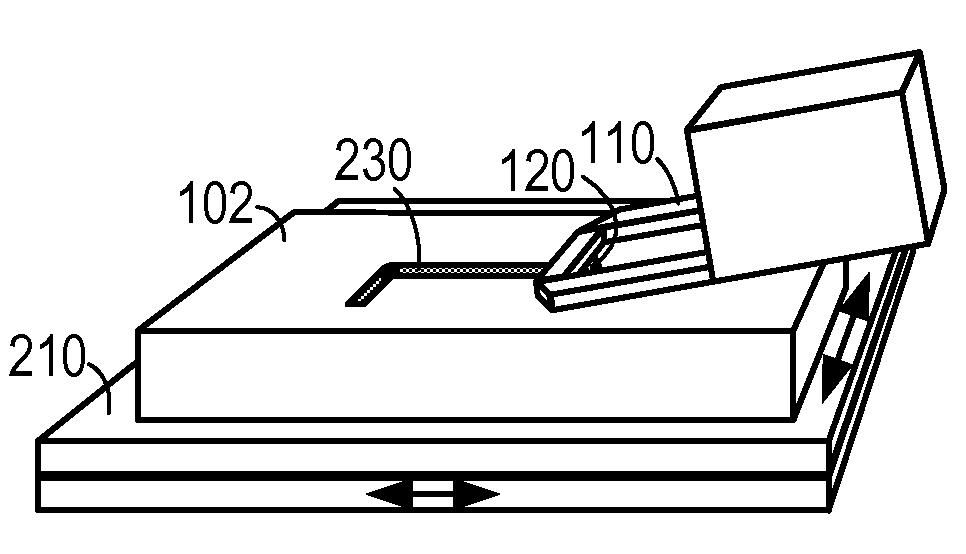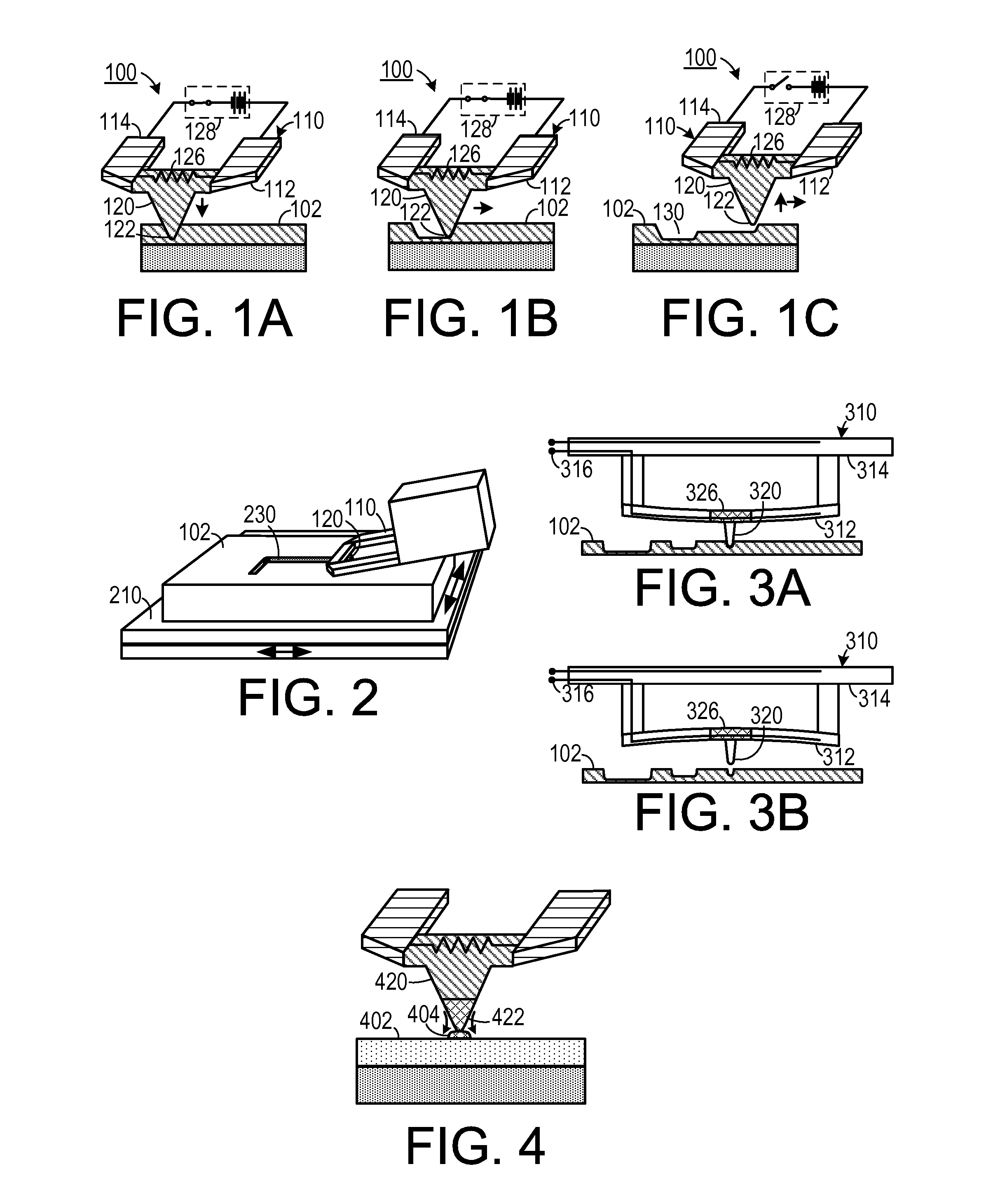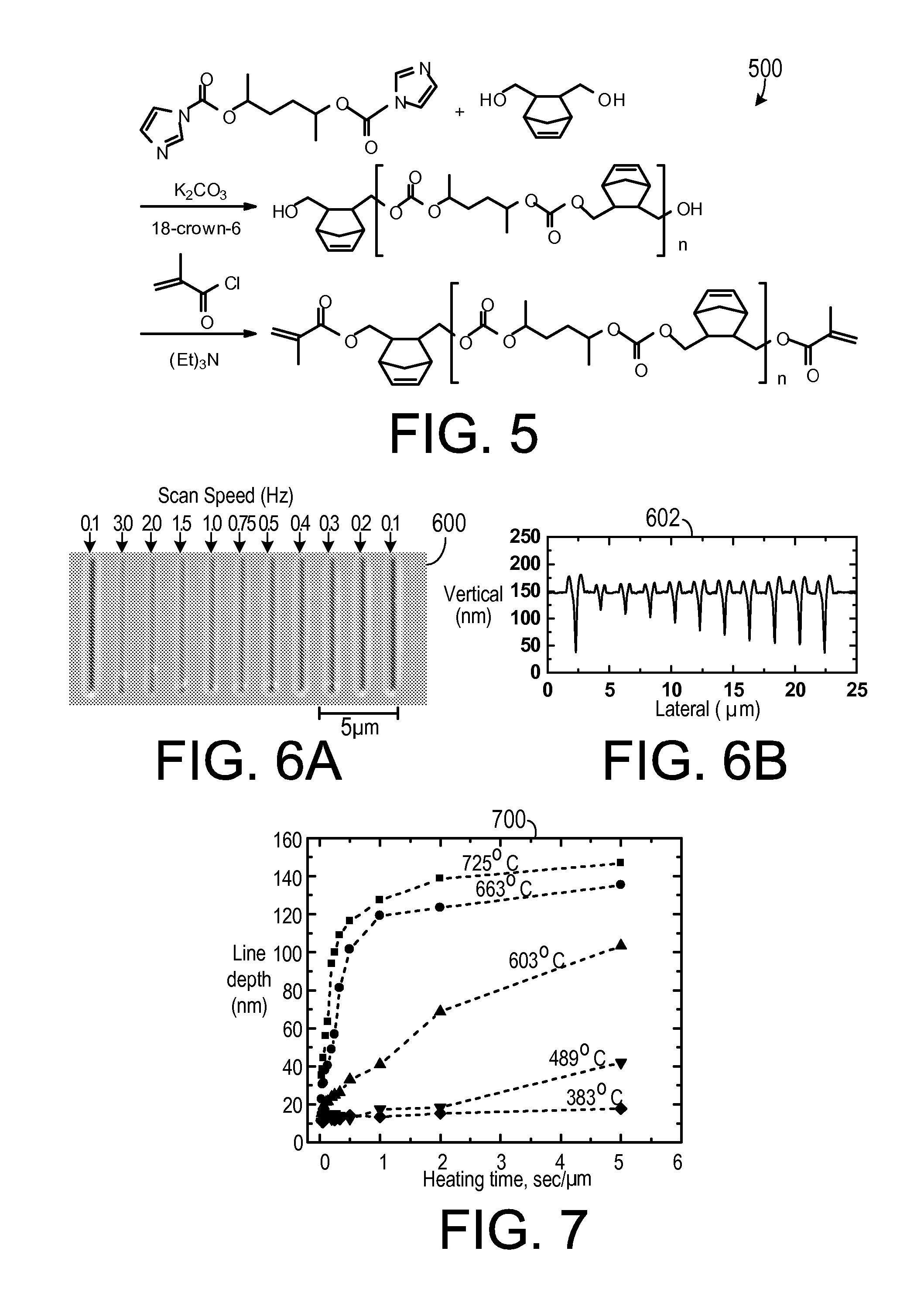Direct write nanolithography using heated tip
a nanolithography and tip technology, applied in the field of nanolithography, can solve the problems of prohibitively expensive photomasks, difficult optical lithography, and inability to manufacture photomasks,
- Summary
- Abstract
- Description
- Claims
- Application Information
AI Technical Summary
Benefits of technology
Problems solved by technology
Method used
Image
Examples
Embodiment Construction
[0030]A preferred embodiment of the invention is now described in detail. Referring to the drawings, like numbers indicate like parts throughout the views. As used in the description herein and throughout the claims, the following terms take the meanings explicitly associated herein, unless the context clearly dictates otherwise: the meaning of “a,”“an,” and “the” includes plural reference, the meaning of “in” includes “in” and “on.”
[0031]One embodiment includes a system and a method for sculpting a surface at the nano-scale. The embodiment includes a probe that can be heated to a temperature that causes material near the surface to decompose. The tip of the probe is brought close to, or in contact with, the surface so as to cause material adjacent the tip of the probe to decompose. As shown in FIGS. 1A-1C, one embodiment includes a nano-sculpting device 100 that employs a probe 120 having a probe tip 122 and a heating element 126 associated therewith. The heating element 126 may be...
PUM
| Property | Measurement | Unit |
|---|---|---|
| wavelengths | aaaaa | aaaaa |
| size | aaaaa | aaaaa |
| roughness | aaaaa | aaaaa |
Abstract
Description
Claims
Application Information
 Login to View More
Login to View More - R&D
- Intellectual Property
- Life Sciences
- Materials
- Tech Scout
- Unparalleled Data Quality
- Higher Quality Content
- 60% Fewer Hallucinations
Browse by: Latest US Patents, China's latest patents, Technical Efficacy Thesaurus, Application Domain, Technology Topic, Popular Technical Reports.
© 2025 PatSnap. All rights reserved.Legal|Privacy policy|Modern Slavery Act Transparency Statement|Sitemap|About US| Contact US: help@patsnap.com



